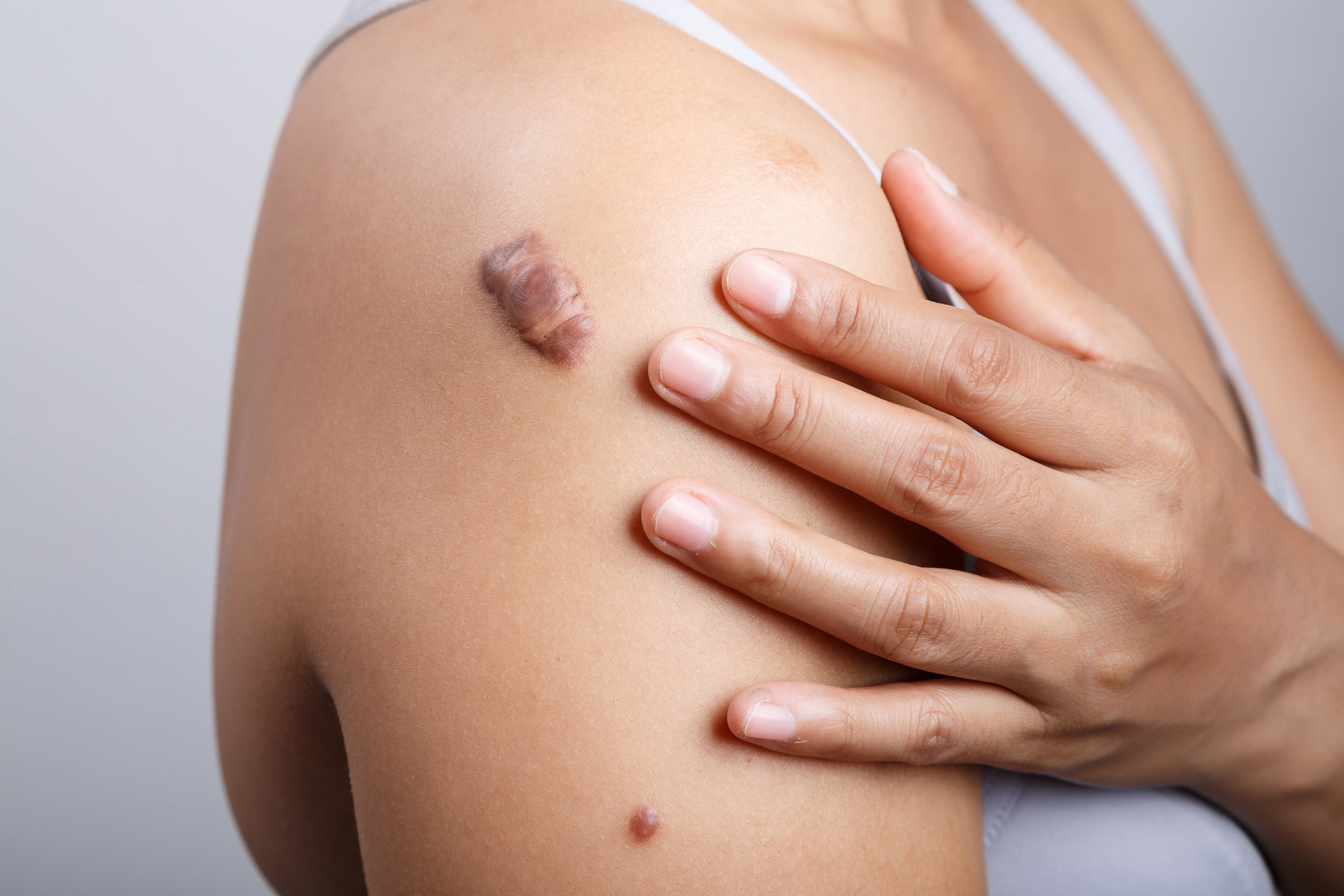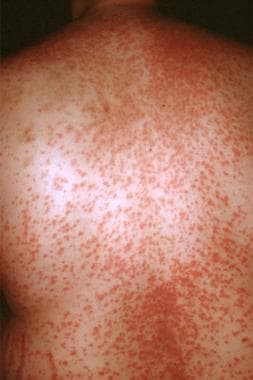Definition
Keloid scars are raised, thickened scars. This condition can occur when a person has a skin injury; it usually forms on the ear lobes, shoulders, cheeks, or chest. If a person is susceptible to developing keloids, they can have keloids in different body areas. Keloid scars are not harmful to health, but they can cause emotional stress as they disrupt appearance and cause discomfort.
Causes
Experts do not know the exact cause of keloids. However, many say that they are related to dysfunction in wound healing. The collagen protein in the body is important for wound healing. However, if the body produces too much collagen, keloids could form.
Keloid growth can be triggered by any form of skin injury, including insect bites, acne, injections, piercings, burns, hair removal, and even minor scratches or bumps. Sometimes, keloid scars can also form without any obvious cause.
Keloid scars are not contagious and do not have the potential to become cancerous. Keloids are different from hypertrophic wounds. Hypertrophic wounds are scars that grow but are still within the boundaries of the original wound and may fade over time.
Risk Factor
Risk factors for keloids include:
- Brown or black skin. Keloids are most commonly found in people with brown or black skin. The underlying theory for this is yet to be discovered
- Having a medical history or family history of keloids. Keloids can be inherited. If you have ever had keloids or someone in your family has keloids, then you are at risk of developing keloids
- Below 30 years old. People aged 20 to 30 are more at risk of developing keloids
Symptoms
Keloids can form within a few months of a skin injury. Symptoms and signs of keloid scars include:
- The formation of thick, irregularly shaped scars that usually appear on the ear lobes, shoulders, cheeks, or middle part of the chest
- A shiny, hairless, lumpy bulge in the skin
- The texture of keloids can vary from soft to dense and rubbery
- Keloid scars can be reddish, brownish, or purplish in color, depending on the skin's original color
- Itchiness
- Discomfort
Diagnosis
Your doctor can diagnose keloid scars by examining your skin. Although rare, a biopsy may be required to rule out the possibility of cancer in keloids with uncommon shapes.
Management
Keloids can be treated; early treatment is the key to minimizing keloid growth. Even after treatment, keloid scars can remain for years. Successful treatment does not guarantee that the keloid will not come back; it can grow back to an even bigger size.
Treatment for keloids may consist of one or a combination of treatments, namely:
- Wound care
For newly developed keloids, the first treatment option is compression of the keloid by using bandage garments or other stretchy materials. This method aims to reduce or prevent the formation of keloid scars by applying pressure to the wound during the wound healing period.
After keloid removal surgery, this method can also be used to prevent keloid regrowth. The bandage needs to be worn for at least 12–24 hours a day for 4-6 months to provide effective results. However, this method can be uncomfortable to perform.
- Corticosteroid cream
Using a corticosteroid cream with the potency your doctor prescribes can reduce itchiness.
- Injection medications
If you have small keloid scars, your doctor may try to reduce the thickness by prescribing steroid injections, such as cortisone. Injections would probably be needed each month for about 6 months until the keloid shrinks. Possible side effects of steroid injections are permanent thinning of the skin, the formation of spider veins in the skin, and permanent discoloration of the skin to be darker or lighter.
- Freezing the keloid
Small keloid scars can be removed or further minimized by freezing them with liquid nitrogen (cryotherapy). Repetition of the treatments may be necessary. Possible side effects include blisters, pain, and hypopigmentation of the skin.
- Laser therapy
The size of large keloids can be shrunk and flattened with a pulsed-dye laser. This method is also successful in reducing itchiness and making the scars fade. This therapy is given in several sessions, with a 4 to 8 weeks gap between sessions. Your physician may recommend combining laser therapy with steroid injections for maximum results. Side effects are more common in dark-skinned people, including discoloration, blisters, and crusts.
- Radiation therapy
Radiation with a low-dose X-ray alone or radiation after keloid removal surgery may reduce the keloid size or minimize keloid formation after surgery. Repeated sessions may be required. A side effect of radiation therapy is skin complications, which, in the long term, may increase the risk of cancer.
- Surgical removal of the keloid
If the keloid does not respond well to the above therapies, the doctor may recommend surgical removal. This technique can be combined with other techniques because if only surgery is performed, there is a risk of keloid recurrence. The recurrence rate of keloids after surgical removal is 45-100%.
- Protection of sunlight
You should also protect your skin from sun exposure as this can change the color of the keloid and make it more obvious. This condition can be permanent. Cover the keloid area or wear sunscreen before going out to prevent this.
As of now, no alternative methods have been proven to remove keloids naturally. Some research suggests onion extract may be effective in improving the appearance of keloids and reducing itchiness and discomfort.
Complications
Keloid scars can appear on joints; if they are hard and firm, they can interfere with joint movement.
Prevention
If you are prone to developing keloids, you can do the following to prevent them from forming:
- Taking good care of the scars
It is generally important to keep the scars clean and moist. Wash the area with non-irritating soap and running water. Then, apply petroleum jelly or other moisturizing ointments. Moisturizer can be applied repeatedly if needed.
Your doctor may recommend wearing pressure or silicone gel pads on the wound during the healing period. Adults must wear them for 6 months after a skin injury, while children need to wear them for up to 18 months. If you have pierced ears, then wearing pressure earrings in the ear lobes can help prevent keloids from forming.
- Protect the skin from injury
Try to avoid skin injury. For example, you should reconsider getting piercings, tattoos, and surgery, which are elective procedures (not required). Even minor skin injuries, such as ingrown hairs, small cuts, or scratching, can trigger keloids to grow.
If you are going to undergo surgery, tell your doctor if you are prone to keloids. The doctor may use surgical techniques that can reduce the risk of keloids developing on the surgical scar. After surgery, ask your doctor about post-operative care that you can take to prevent keloids from developing.
When to See a Doctor?
If you feel uncomfortable due to the presence of keloids, you can consult a doctor to reduce or remove the keloids.
Want to know information about other diseases, Click here
- dr Anita Larasati Priyono
Keloid scar: diagnosis and treatment, Mayo Clinic. Mayoclinic.org. (2022). Retrieved March 21, 2022, from https://www.mayoclinic.org/diseases-conditions/keloid-scar/diagnosis-treatment/drc-20520902.
https://www.aad.org/public/diseases/a-z/keloids-treatment
Keloids and hypertrophic scars | DermNet NZ. Dermnetnz.org. (2022). Retrieved March 21, 2022, from https://dermnetnz.org/topics/keloid-and-hypertrophic-scar.











